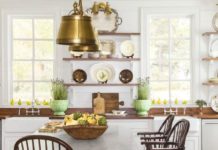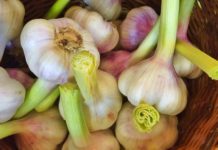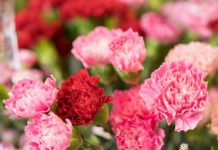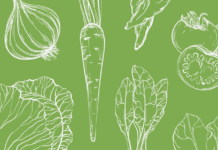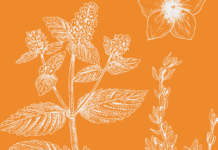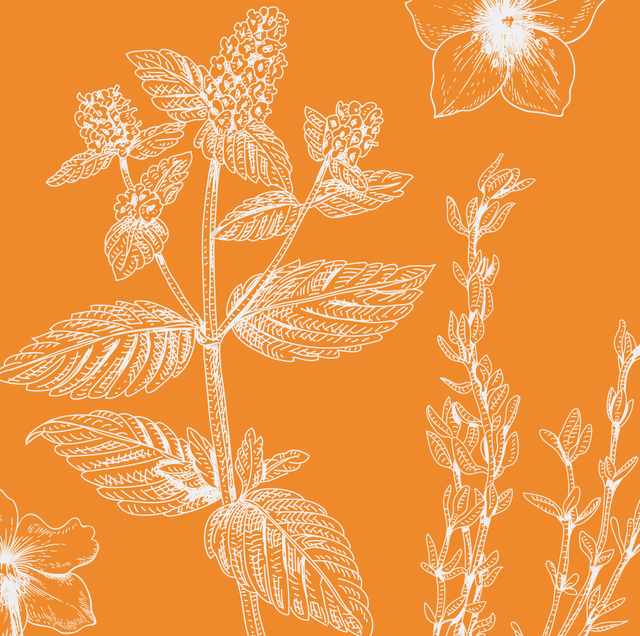Like clockwork, perennial flowers and plants pop up every blooming season with fresh buds, refreshed colors, and bold aromas. By definition, perennials are plants that live more than two years, and the name literally translates to “through the years.” Unlike short-lived annuals or biennials (plants that take two years to grow), these varieties are fairly low-maintenance after their initial planting. That means, they’re a great option for anyone looking to add long-lasting beauty to their garden, yard, or woodland.
Here, we’ve rounded up the best perennials to grow this year — and all the years following — complete with their zone requirements, sunlight needs, and optimal blooming times. Keep in mind that not all perennials are created equal: Some are short-lived, which means they’ll only bloom for a few years before completely dying out. Others, like the ever-popular Daylily, only bloom for one day each year. All in all, many of these flowering and foliage beauties make great ground covers, borders, and garden pollinators.
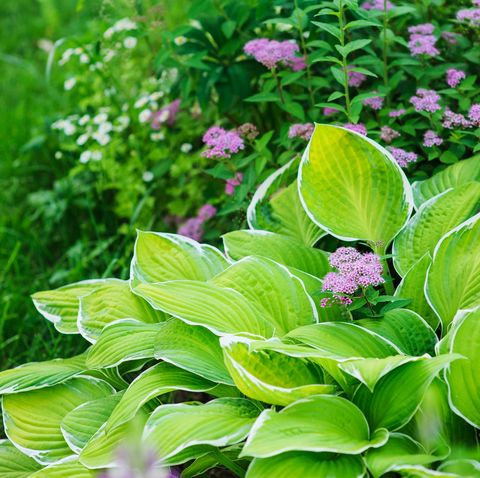
Bring a tropical look to your garden with this low-maintenance foliage, which comes in a variety of green shades with white or purple flowers during summer or fall. While many tout Hostas as shade-loving plants, that’s not necessarily the case: the lighter the leaves, the more sun it needs to thrive. Otherwise, they’re fairly tolerant and can live for decades if properly cared for.
Zones 3- 9; prefers partial shade; blooms summer to fall
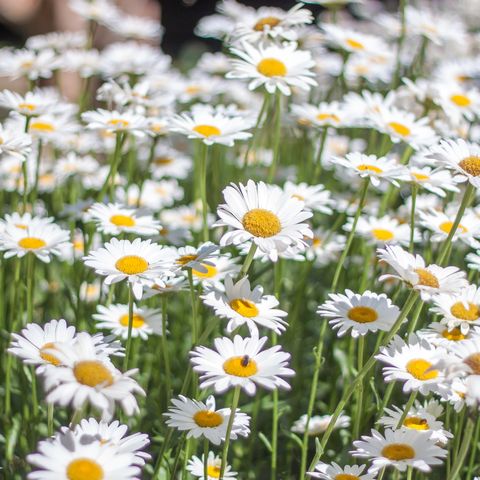
If your neighborhood deer nibble on everything in sight, consider planting a patch of Shasta Daisies. Along with being deer and rabbit-resistant, these short-lived perennials grow in clumps, filling up any empty spots with bright bursts of white and yellow. Bonus: You can cut the flowers at the stem for an instant vase filler or centerpiece, and they’ll regrow in no time.
Zones 5-8; prefers full sun; blooms late spring to fall
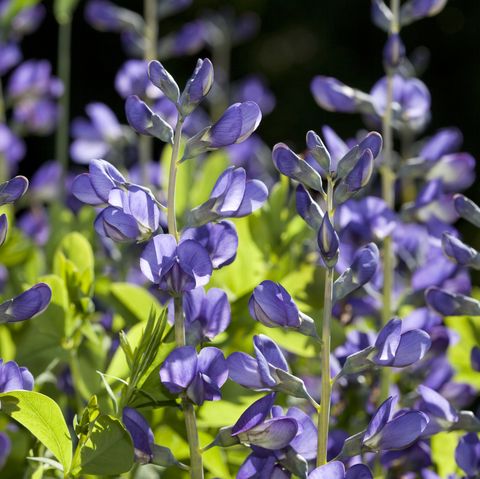
One year after planting, lupine-like flowers will pop up, filling your garden with shades of blue, purple, and green. They’re basically disease and pest-free, which means nothing can get in their way from growing year after year. Over the years (okay, decades), they’ll grow up to four feet in height and fill out like a shrub.
Zones 5-9; prefers full sun/mostly sun; blooms late spring to early summer
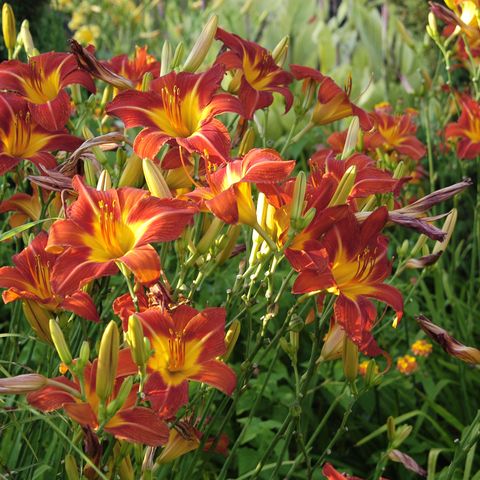
Affectionally called the “perfect perennial,” Daylilies survive through almost anything — fluctuating temperatures, irregular watering, and so on. They come in a variety of colors and sizes, so you can find the right option to suit your garden or landscaping. And while each stem grows several flowers, keep in mind that the buds only bloom for one day.
Zones: 4-9; prefers full sun/partial shade; blooms early summer
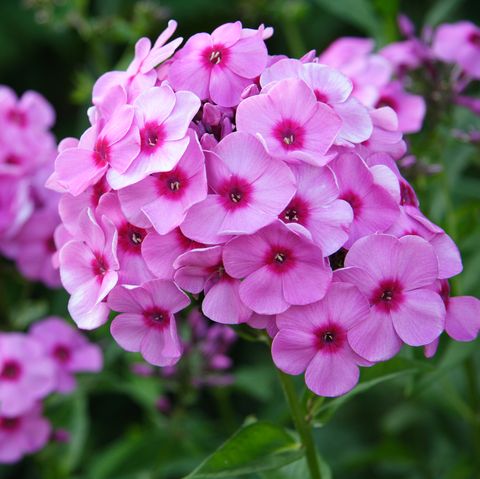
Starting in early spring, low-growing phlox blooms as ground cover. Then during the summer months, the tall phlox — anywhere from three to five feet in height — pop up, creating a colorful backdrop for any low-growers. No matter the height, all of these star-shaped flowers emit a strong fragrance and require little TLC.
Zones 2 – 9; prefers full sun but tolerates shade; blooms spring to summer
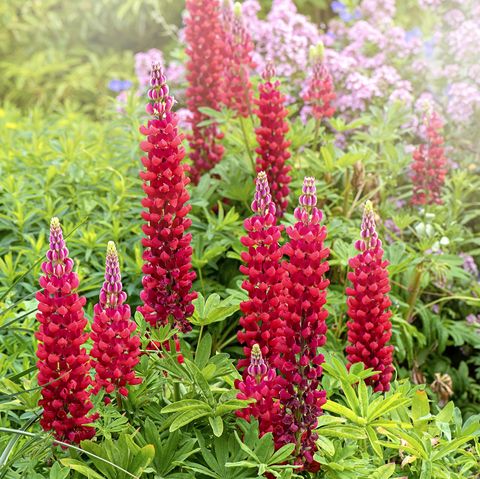
Lupines are frequently spotted in the wild — ever heard of Texas Bluebonnets? — but you can also grow these spiky flowers in your garden at home. Throughout their short life, stems can grow up to five feet tall, complete with red, white, yellow, pink or purple blooms that resemble pea flowers.
Zones 4 – 7; prefers full or partial sun; blooms spring to summer
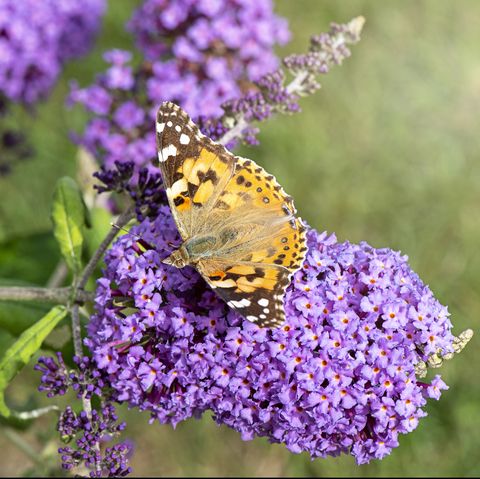
Just like the name implies, the blossoms on these shrubs attract tons of butterflies throughout the summer and fall months. While the flowers come in white and dark purple, the lavender-pink blossoms are the most appealing to the winged beauties in your area. Even though they’re maintenance, the shrub requires annual pruning to keep it in tip-top shade for the coming year.
Zones 5 – 10; prefers full sun; blooms summer to fall
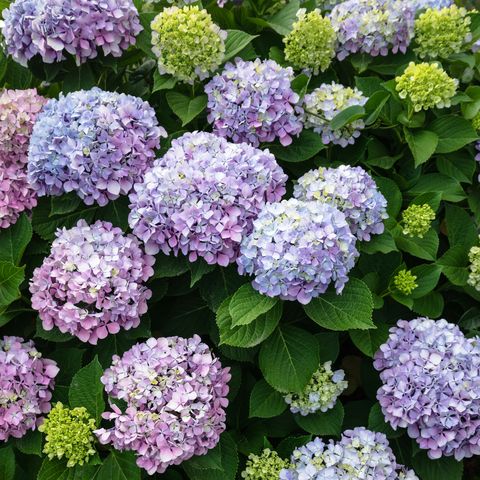
Hydrangeas have been popular for decades, and for good reason: The larger-than-life flower heads blend elegance and charm, adding touches of pink, lavender, blue, and white to gardens. To ensure that they live a full life (50 years!), plant them in spring after the last spring frost or in fall before the first fall frost.
Zones 3 – 9; prefers partial sun; blooms summer to fall
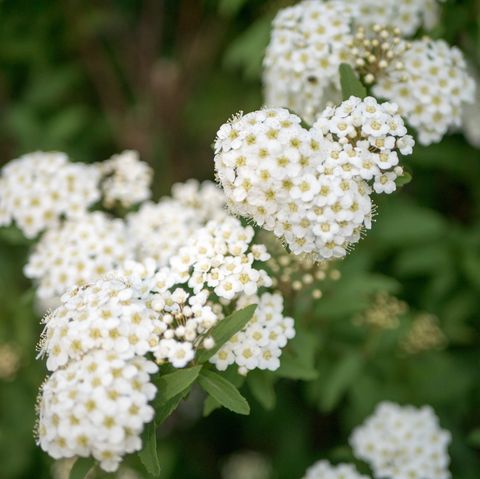
This hardy and versatile perennial is as carefree as it gets: Yarrow is pest-resistant, quick to spread, and a major pollinator. Since it grows quickly, use it as ground cover, or to fill open meadows or large spaces. Once the red, yellow, pink, or white flowers bloom, cut them (a.k.a. deadhead) when their color starts to fade to encourage more flowers to grow.
Zones 3 – 9; prefers full sun; blooms summer
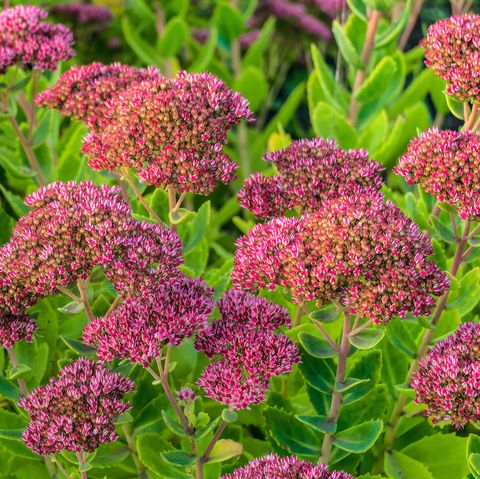
Pollinators love the star-shaped flower clusters — and gardeners do too! Depending on the size of your space, choose between low-growing sedum (a great ground cover option!) or upright sedum. Both varieties boast the same beautiful results: succulent-like leaves with tiny pink, red, or yellow flowers.
Zones 3-10; prefers full sun (low-growing sedum tolerates partial shade); blooms summer to fall
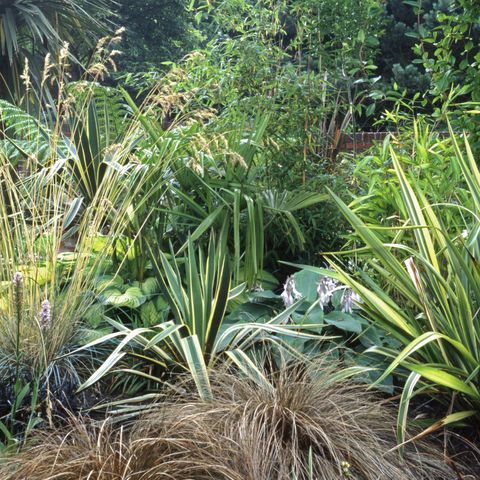
Keep these low-growers in mind for edgings, borders, and ground covers. There are tons of grasses to choose from: Opt for Carex Evergold to add a vibrant yellow hue, or Blue Fescue to complement the blues and purples in your garden.
Zones vary; most prefer partial shade; blooms spring to summer
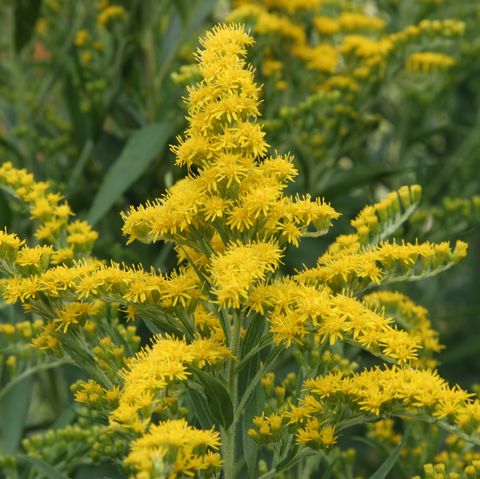
Add some contrast to the grasses and greens in your garden with golden-yellow spikes. Some consider Goldenrod a weed — and that’s because it grows quickly and can overtake your garden if not treated with care. But if you tame it from one season to the next or prefer the wildflower look, then it’s a great choice.
Zones 2 – 8; prefers full to partial sun; blooms late summer to fall
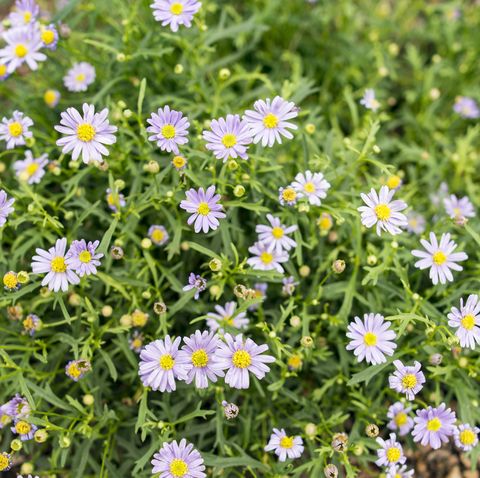
The star-shaped flower heads may give off the same look as daisies, but they’re an entirely different type of perennial. The plants, which can grow anywhere from eight inches to eight feet in height, really come to life in late summer, giving bees and butterflies an important late-season pollen supply.
Zones 3 – 8; prefers full sun; blooms late summer to fall
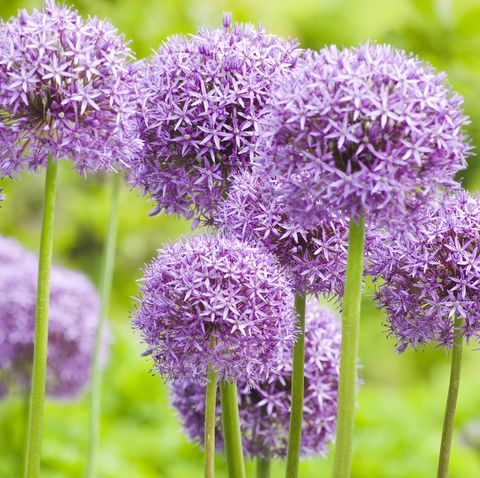
Believe it or not, these purple pompom flowers are actually a part of the onion family — the spherical shape is similar, no? Once planted, they can be untouched for years, especially since rodents, deer, and pests tend to avoid them. Their skinny stems rise to 30 inches in height, making them stand out against ground covers and low-growing varieties.
Zones 3 – 9; prefers full sun; blooms summer to fall
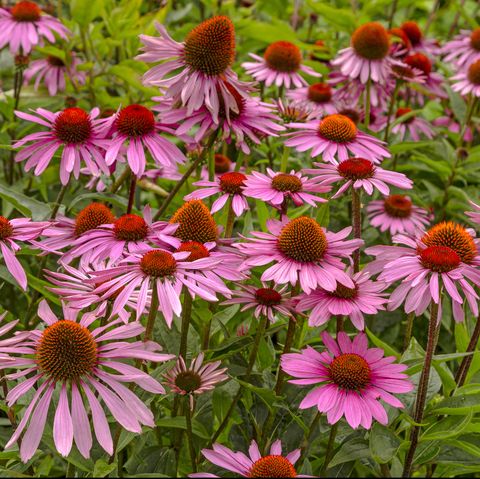
Make a bold statement by planting masses of Coneflowers in a range of pinks, purples, oranges, and yellows. Since they’re a part of the daisy family, these trouble-free blooms bare similar qualities: They grow fast, self-sow seeds all season long, attracts butterflies, and tolerates little or no water.
Zones 3 – 9; prefers full sun; blooms summer to fall
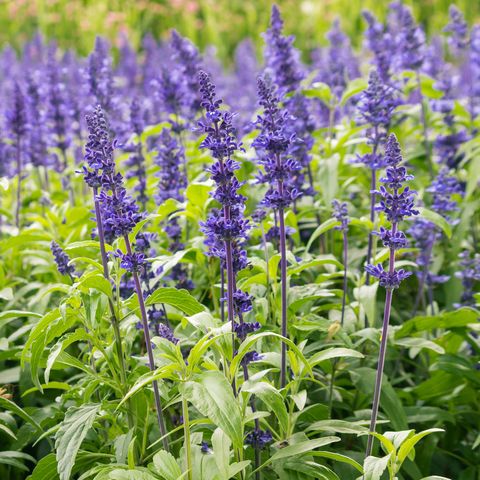
The kitchen herb you’ve come to know and love is actually a type of Salvia. This flowering beauty, however, works well as a garden border, attracting bees, hummingbirds, and butterflies all summer long. Over time, they’ll grow anywhere from 18 inches to five feet tall, despite the heat or drought conditions.
Zones 5 – 10; prefers full sun; blooms spring to fall
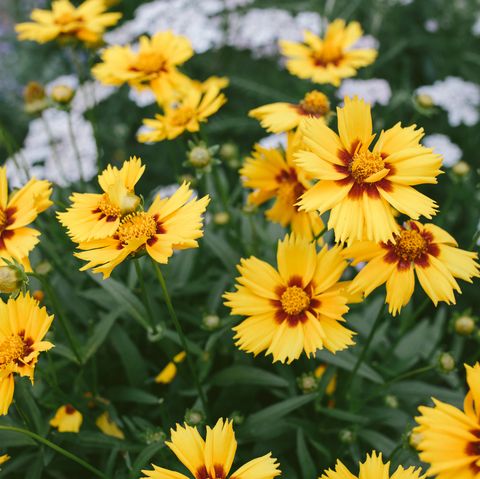
This cheery flower has more than 80 species, all of which share a similar butter-yellow shade. The low-maintenance, drought-tolerant perennial has a relatively short life, lasting three years in southern climates and four years in the north.
Zones 4 – 9; prefers full sun; blooms late spring to summer
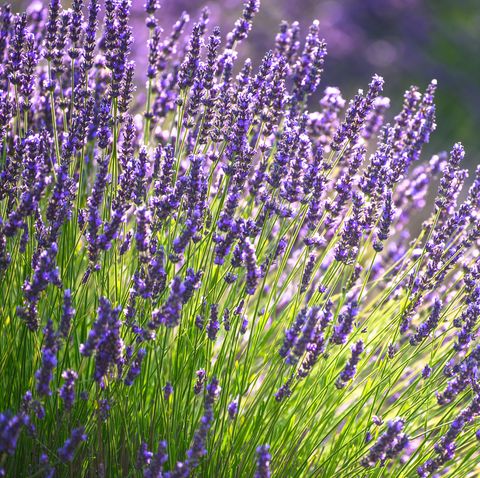
Bring the sights and smells of the Mediterranean to your yard by growing this aromatic plant. It grows especially well in areas with hot temperatures and little rain, making it a great addition for extreme climates.
Zones 5 – 9; prefers full sun; blooms late spring to early summer
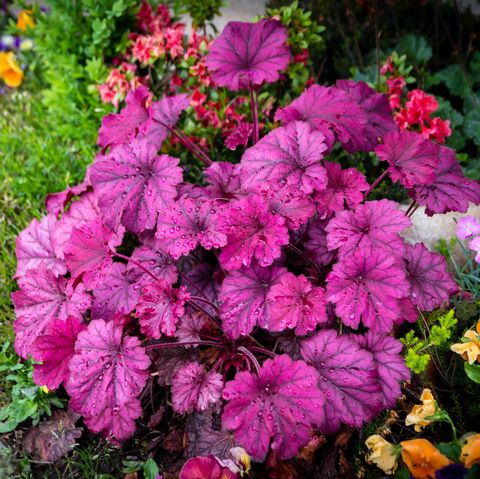
The small bell-shaped flowers that spring up from this foliage plant attract hummingbirds during the summer months. But really, they’re frequently used as ground covers, or as borders in woodlands or rock gardens.
Zones 4-8; prefers full sun or part shade; blooms spring to summer
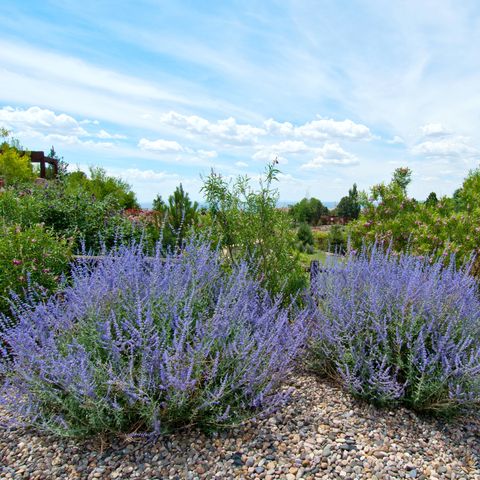
This woody shrub has a weeping effect: It starts growing tall, but then falls over due to the weight of the long panicles of flowers. Throughout summer, the pale blue flowers transform into a bright, cyan-blue.
Zones 4 – 9; prefers full sun; blooms summer









